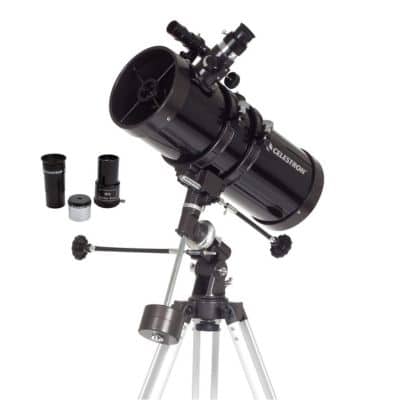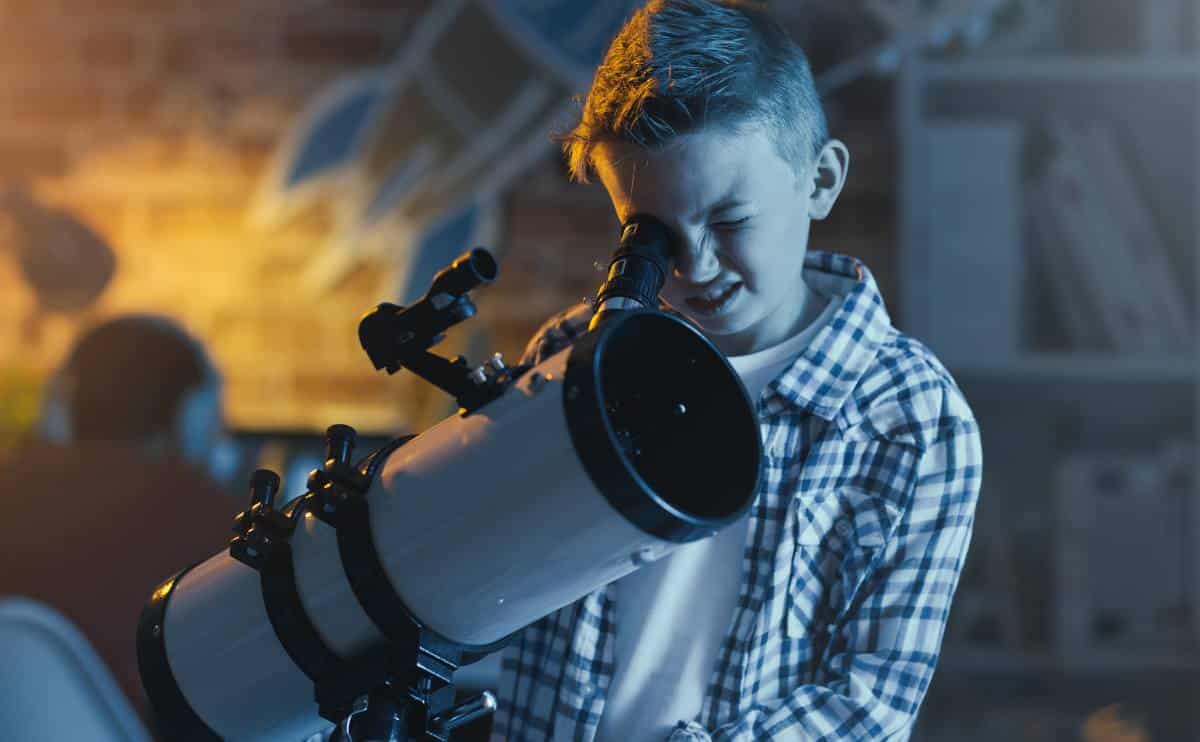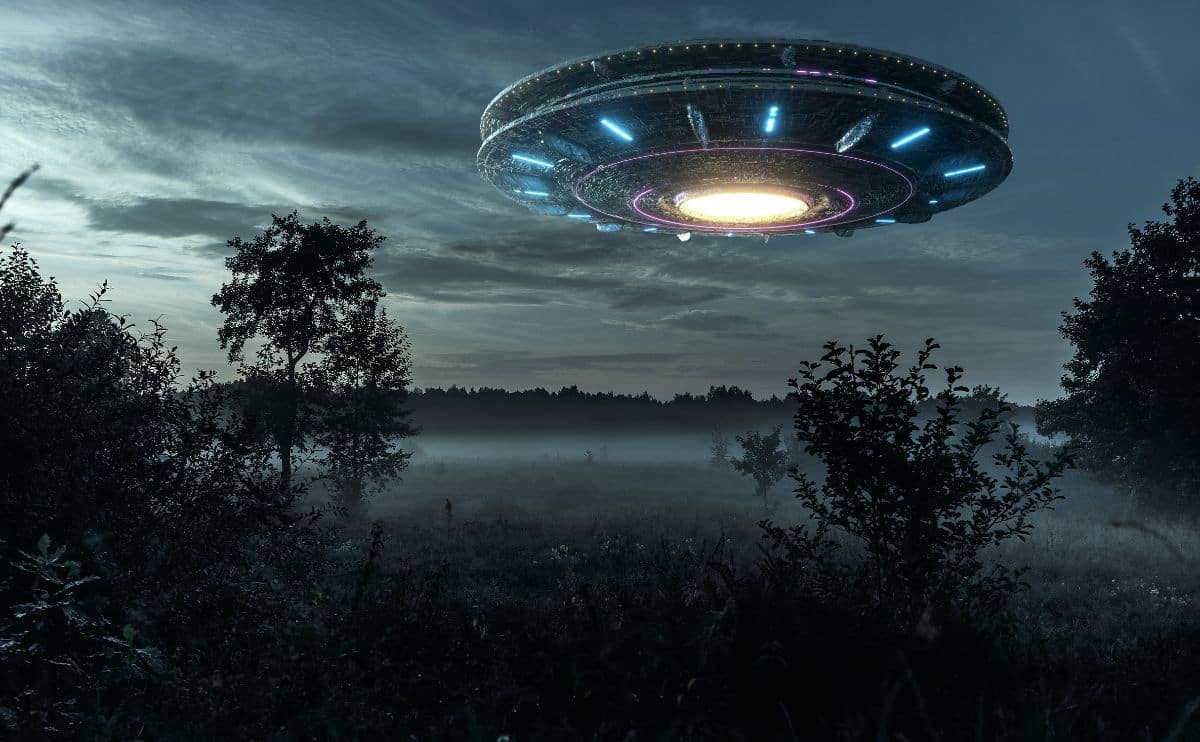4 Best Telescopes: SVBONY vs Celestron vs Gskyer
When you purchase through links on our site, we may earn a commission. Here’s how it works.
I, like many people, have a fascination with our celestial skies. If you’ve never used a telescope to magnify our mysterious galaxy, you don’t know what you’re missing. From seeing twinkling stars and planets to identifying constellations and watching celestial events, a telescope is an amazing window into the unknown. Who knows? Maybe you’ll discover something unknown to man. However, not all telescopes are the same, so I’ll help you choose the best telescope for your needs and skill level.
| Best For Astrophotography | Best Under $200 | Best For Beginners | Best For Kids |
|---|---|---|---|
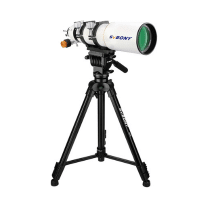 | 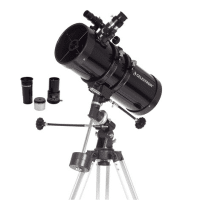 | 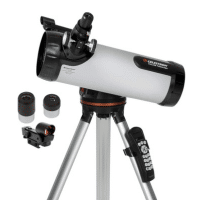 | 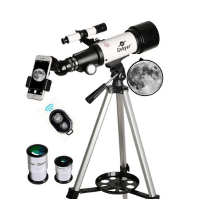 |
| SVBONY SV503 | Celestron 127EQ | Celestron 114LCM | Gskyer AZ70400 |
| View on Amazon | View on Amazon | View on Amazon | View on Amazon |
| Read Review | Read Review | Read Review | Read Review |
A Quick Explanation Of Telescope Terminology

When looking for a telescope, you don’t have to be an expert, but it helps to understand some essential functions and parts. If you’re a newbie to telescopes, here are a few terms you may want to be familiar with so you’ll know what to look for.
- Aperture – The aperture is the diameter of the telescope’s primary lens or mirror.
- Compound telescope – A telescope with a lens on the front and a mirror on the back. The two main types are the Maksutov-Cassegrain (Mak) and the Schmidt-Cassegrain telescope (SCT).
- Eyepiece – The part that viewers look into. Eyepieces with different focal lengths can change the magnification of the telescope.
- Finderscope – The finderscope is a smaller telescope with lower magnification to help aim the bigger scope at a focal point. It often has crosshairs to help aim at specific objects.
- Focal length – The distance, often in millimeters, from the mirror or lens to the image created. Most of the time, this equals the length of the tube. Some designs use mirrors or extra lenses to increase focal length in a shorter tube.
- Magnification – Also referred to as power, magnification is the level at which a telescope increases or enlarges the view of an object.
- Magnitude – Refers to the brightness of an object. A higher magnitude means a dimmer light. Lower-magnitude objects are brighter.
- Mount – A mount supports the telescope, keeps it steady, and allows it to be moved and pointed at different things.
- Objective – The objective refers to the light-gathering mechanism, either the mirror or the lens.
- Reflector – A reflector telescope gathers light using a mirror.
- Refractor – A refractor telescope gathers light using a lens.
- Resolution – Resolution refers to a telescope’s capability to separate two point sources into two distinct images.
What Can You See Through Your Telescope?
The world’s largest telescope allows you to see 13.5 billion light-years away. In fact, the most powerful telescope is not located on Earth. The James Webb Space Telescope currently orbits the sun, sending us breathtaking images that are truly out of this world. Unfortunately, none of the telescopes in this article allow for that type of imaging, but they still provide excellent star gazing right from your own backyard.
You can see many amazing things from these telescopes, including the moon, stars, planets, galaxies, constellations, and satellites. Celestial events like the passing of comets, asteroids, meteor showers, and eclipses are also visible if the timing is right. You can also use telescopes to see things during the day, both in the sky and on the ground. Along with seeing the sun, moon, and some planets during the day, scopes are also great for wildlife watching and aircraft viewing.
A quick note: day or night, never look directly at the sun, and never through a telescope unless you have a solar filter.
What To Look For In A Telescope?
When selecting a telescope, there are a few different elements to consider. The first is the purpose. How do you plan to use the telescope? Are you a beginner or an experienced professional? Do you plan to do simple stargazing, or are you hoping to take pictures with a cell phone or camera? Is the telescope for home use, or do you want to be able to travel with it? Of course, budget is always a significant consideration.
We’ve chosen four of the best telescopes on the market by category, including the best telescope for astrophotography, the best telescope for kids, and the best telescope for beginners. The ideal one for you depends on your comfort level and what you’re interested in.
Some might be looking for a new hobby with the kids, whereas others might be more experienced stargazers who need a better tool in their celestial arsenal. Either way, I’ve put a lot of thought and research into picking the best product for each category to help you make your decision. Some of these telescopes allow you to see more than others, so you will want to choose wisely!
Best Telescope For Astrophotography: SVBONY SV503 Telescope Review
Astrophotography refers to taking pictures of astronomical objects or astronomy photography using a telescope and camera. There are a variety of ways to do this. Some folks like to take pictures of specific celestial objects, while others want more wide lens shots, capturing things like the Milky Way galaxy.
If you’re looking for a telescope for astrophotography, chances are you’re more experienced than many. These telescopes can range from a few hundred dollars to over $10,000. The SVBONY SV503 Telescope, 80ED F7 Telescope OTA, is a top choice for those searching for a quality telescope to capture astrographic images.
It uses an air-spaced triple optical design that helps eliminate chromatic aberration (color distortion). It can catch high-contrast images of the deep sky and is easy to operate. This one is manual focus with 360-degree rotation. It includes a built-in bubble level.
The bundle option comes with the telescope and travel tripod. You can use it at home, but it’s also easily portable. If you are not a beginner and want more power, consider the SVBONY SV550 APO Triplet Refractor, 80mm F6 OTA. For those who want even higher quality space images, a 122mm version is available for professional photographers.
| Pros | Cons |
|---|---|
| Top-quality images | Some users find the telescope to be small |
| Easy to set up and use | |
| Affordable | |
| For both beginners and advanced stargazers | |
| Designed for astrophotography |
Price & Tech Specs
- $537.99
- Dimensions: 18.11″D x 3.15″W x 3.3″H
- Weight: 10 pounds
- Focal Length: 560mm
- Focal Ratio: f/7
- Resolution: 1.5 arc seconds
- Clear Aperture: 80mm
Best Telescope Under $200: Celestron 127EQ PowerSeeker Telescope Review
We’ve chosen the Celestron 127EQ PowerSeeker Telescope as the best telescope under $200. This telescope is best for terrestrial and astronomical use. It’s great for kids or adults and can be used all year round. It also comes with “The Sky” Level 1 planetarium software with a 10,000-object database.
The biggest complaint we saw during our research was that people had unreasonable expectations for a telescope under $200. It’s important to remember that this isn’t a $10,000 telescope. For under $200, it is a wonderful tool for backyard and amateur star gazing.
| Pros | Cons |
|---|---|
| No tools needed for setting up | Buyers complain that it’s not made of the highest quality material |
| Slow motion controls | |
| Enhanced image brightness and clarity | |
| It comes with an accessory tray | |
| 2-year warranty |
Price & Tech Specs
- $144.99
- Dimensions: 11″H x 17″W x 33″D
- Weight: 17 pounds
- Focal Length: 1000mm
- Focal Ratio: 7.87
- Resolution (Rayleigh): 1.1 arc seconds
- Resolution (Dawes): 0.91 arc seconds
- Clear Aperture: 127 mm
Best Telescope For Beginners: Celestron 114LCM Computerized Newtonian Telescope Review
This telescope by Celestron is a fully computerized Newtonian telescope using all glass optics. It can automatically locate 4,000 celestial objects using a computerized GoTo mount. It’s perfect for beginners as the computerized telescope will guide users on a sky tour. The 114LCM is a powerful telescope for a very affordable price. Designed to be beginner-friendly, it comes with everything you need to start searching the skies.
While you won’t see deep space very well with this telescope, it is perfect for backyard sky gazing. It comes with both 25 mm and 9 mm eyepieces and a StarPointer red dot finderscope. The kit comes with the Celestron Starry Night software.
I have purchased several Celestron telescope products. They are very durable, work well, and have been reliable in my experience. The motorized one has been very helpful. I purchased one for my father several years ago. He enjoyed using a telescope and had a manual scope similar to the Celestron 127EQ, but it was more complicated to use as he got older.
The motorized one worked very well. He could use the software to locate many celestial objects he would not have seen otherwise. Though he preferred the manual one, he truly enjoyed the motorized functions and could use it more than the manual one he had before. We never had any significant malfunctions and got many years of use out of it. It was well worth the higher investment.
| Pros | Cons |
|---|---|
| Motorized mount and automatic sky-tracking | Higher price |
| Bonus Starry Night software | It takes time to learn to use all the features |
| 2-year warranty and customer support for U.S.-based customers | Requires some assembly |
Price & Tech Specs
- Telescope: $330.65
- Dimensions: 35″ x 16″ x 11″
- Weight: 13.2 pounds
- Focal Length: 1000mm
- Focal Ratio: f/8.77
- Resolution (Rayleigh): 1.22 arc seconds
- Resolution (Dawes): 1.02 arc seconds
- Clear Aperture: 114mm
Best Telescope For Kids: Gskyer Telescope AZ70400, 70mm Aperture 400mm Astronomical Refracting Telescope Review
This telescope by Gskyer is easy to use and designed for beginners. It is lightweight and easy to take on the go. Additionally, the kit has everything you’ll need to take high-quality images right from your cell phone. The Gskyer is a top pick for the best telescope for kids.
I have purchased the Gskyer telescope in the last two years. I purchased it for my kids, who like to look at the sky in the backyard. We are active and often go hiking and camping. The scope is excellent for viewing the night sky, birdwatching, and exploring during the day.
In particular, I find that it is very good for looking at the moon and planets when they are highly visible. The scope is simple to set up, use, and focus. The tripod is sturdy, adjustable, and very easy to use. It is a worthwhile choice for both kids and adults. Remember that this is a basic scope designed for kids and beginners, not a thousand-dollar scope.
With kids (and adults!) who are new to space viewing, a simple scope like this is a perfect way to pique their interest and start what may be a lifelong hobby. I personally have been looking to the skies to explore since I was a little kid. I remember sitting atop my dad’s car in 1986, watching in awe as Halley’s Comet flew across the stars. Since then, I have watched numerous meteor showers, comets, eclipses, and shooting stars through different telescopes.
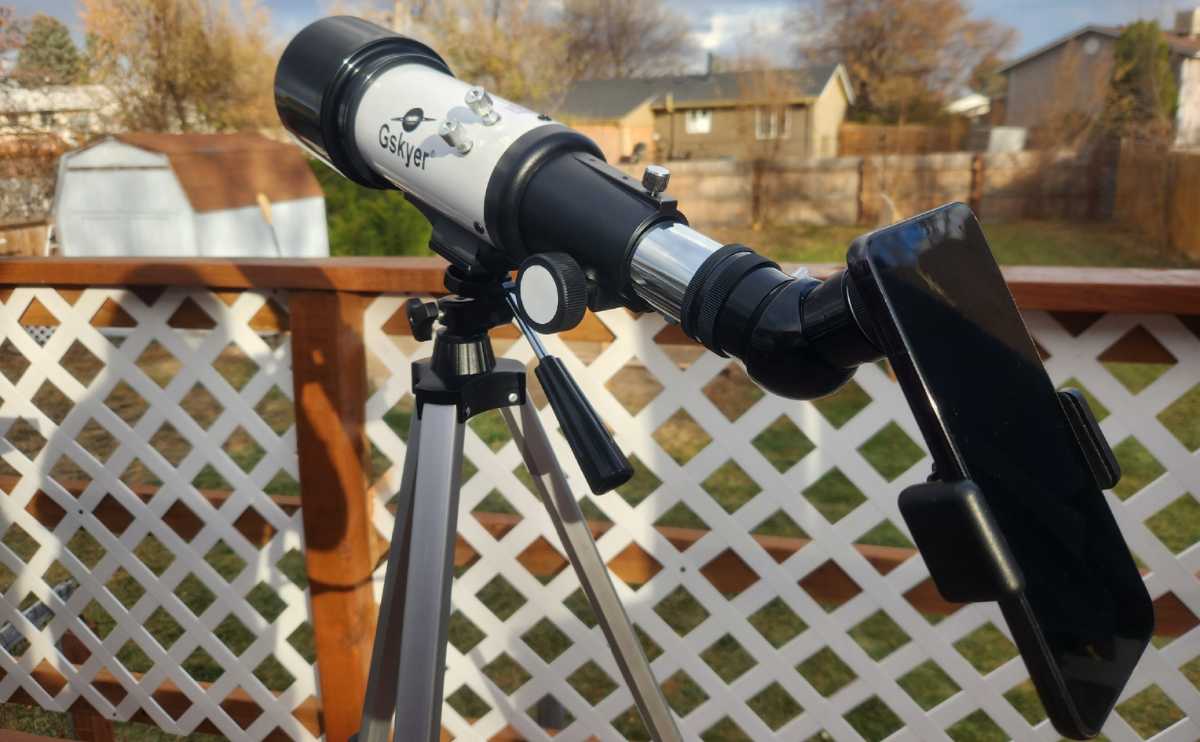
| Pros | Cons |
|---|---|
| Easy to use | It is a very basic telescope |
| Viewers can take pictures with a cell phone | It can be hard to focus |
| Wireless remote for use with a smartphone | |
| An adjustable, sturdy tripod |
Price & Tech Specs
- Telescope: $96.99
- Dimensions: 24.8’ x 4.92 x 8.46″
- Weight: 2.6 pounds
- Focal Length: 400mm
- Focal Ratio: f/5.7
- Clear Aperture: 70 mm
Stay Safe When Sky Gazing
Whenever you are outside using your telescope, do not forget to pay attention to the weather and stay safe. Regardless of how beautiful they are, storms, especially those with thunder and lightning, are not safe to be out in. Pay attention to what is happening around you, and take cover if needed.
What’s the coolest thing you’ve seen in the planetary sky? We would love to hear about it in the comments below.


